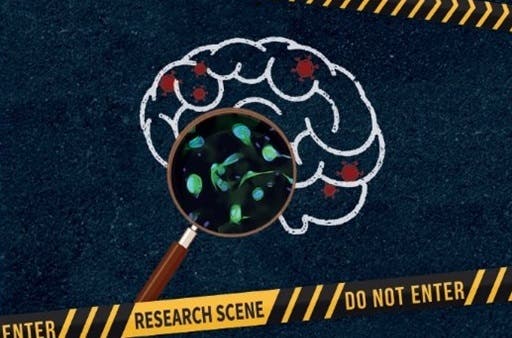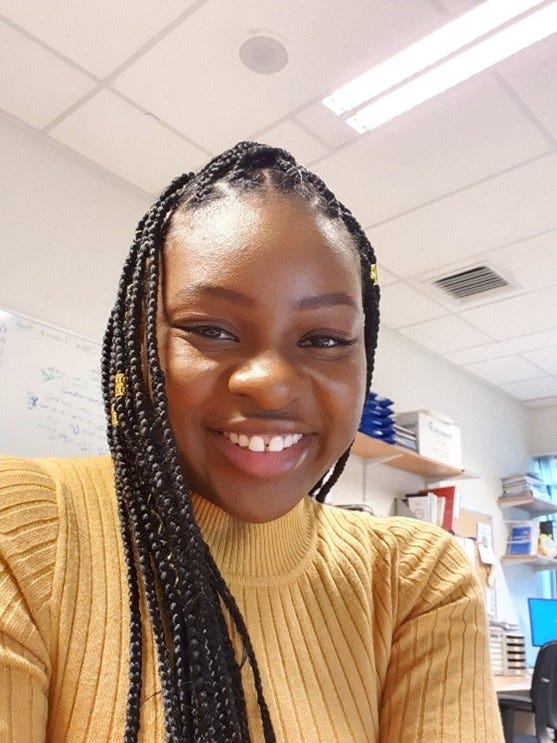Feb 16: The central nervous system, a reservoir for HIV?

Microglia cells are the only cells in the central nervous system that support HIV infection and replication and intact HIV DNA remains present in the CNS despite long-term treatment. In addition, in some HIV-positive individuals there is a significant difference between the virus population in the blood and that in the cerebrospinal fluid, indicating active replication in brain cells. With this thesis, fresh PhD Stephanie Gumbs from UMC Utrecht showed that in the central nervous system, microglia cells are the main reservoir for HIV.
Since the emergence of the human immunodeficiency virus (HIV) in the 1980s, the virus has claimed the lives of approximately 36 million people worldwide with a similar amount of people currently living with HIV. Antiretroviral therapy (ART) has substantially improved the lives of people with HIV by effectively suppressing viral replication. However, HIV hides in resting cells that persist within anatomical reservoirs, that cannot be targeted by current drugs. The achievement of HIV cure therefore relies on the eradication or permanent silencing of these infected resting cells. For example, HIV can be found in the central nervous system (CNS) already 8 days after a suspected infection. It is unknown if the CNS also acts as a reservoir for latent HIV waiting to be reactivated, which is partly due to the inaccessibility of brain tissue in living subjects.
Unique collection of samples
PhD candidate Stephanie Gumbs (Department of Medical Microbiology, UMC Utrecht) investigated whether the CNS can serve as an anatomical reservoir for HIV and also investigated in which brain cells HIV might be hiding. In this context, she studied various CNS resident cell types including microglia, and peripheral CD4+ T cells with help of a unique collection of samples (obtained from blood, cerebrospinal fluid (CSF) and brain biopsies) from untreated and treated people living with HIV. This research was funded by the Aidsfonds, Health~Holland and the National Institute of Mental Health.
Microglia cells as a HIV target
Gumbs and colleagues demonstrated that intact proviral HIV DNA is present in the microglia in the CNS despite long-term effective ART. Furthermore, they found that some individuals had a significantly higher virus population in CSF than in the blood, which indicates that HIV can infect and replicate within cells in the CNS. Using microglial culture models, it was also demonstrated that microglia support HIV infection and subsequently produce new infectious HIV particles. Finally, based upon a newly developed cerebral organoid culture model, the investigators showed that microglial cells are the only HIV target cell in the CNS.
Stephanie Gumbs concludes: “The achievement of an HIV cure is dependent on the eradication or permanent silencing of latent HIV reservoirs. Our work has demonstrated that the CNS, particularly microglial cells, can support HIV infection and replication and also harbor intact proviral HIV DNA despite long-term ART and viral suppression. This strongly suggests that the CNS can function as a viral reservoir and that therefore the CNS should be included in HIV eradication strategies.”

Stephanie Gumbs, PhD
PhD defense
Stephanie Gumbs (1992, Curaçao) defended her PhD thesis on February 16, 2023 at Utrecht University. The title of her thesis was “Investigations of the central nervous system as a viral reservoir for hiv.” Supervisors were prof. dr. Emmanual Wiertz and prof. dr. Anne Wensing (both Department of Medical Microbiology, UMC Utrecht). Co-supervisors were dr. Monique Nijhuis (Department of Medical Microbiology, UMC Utrecht) and dr. Lot de Witte (Department of Psychiatry,UMC Utrecht and Department of Psychiatry, Icahn School of Medicine at Mount Sinai, New York NY, USA). Following her PhD defense, Stephanie will continue her career as a postdoctoral research fellow at the Cincinnati Children’s Hospital Medical Center in Cincinnati OH, USA.
